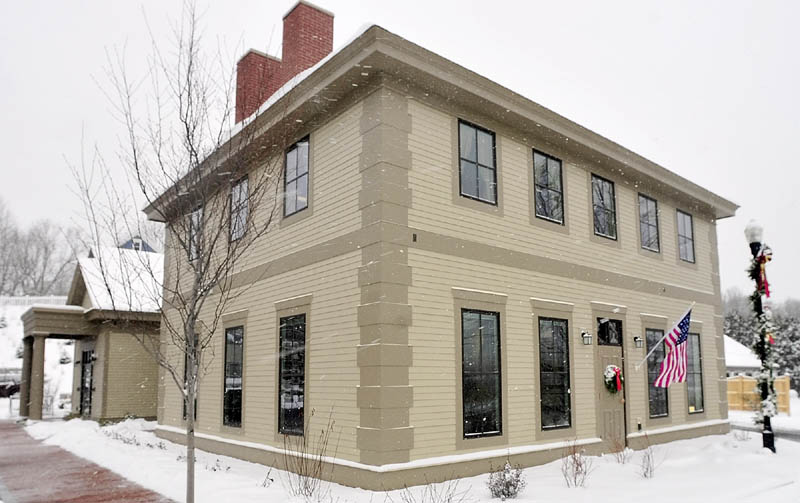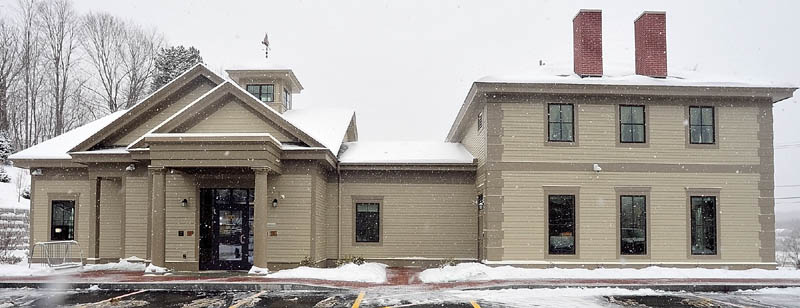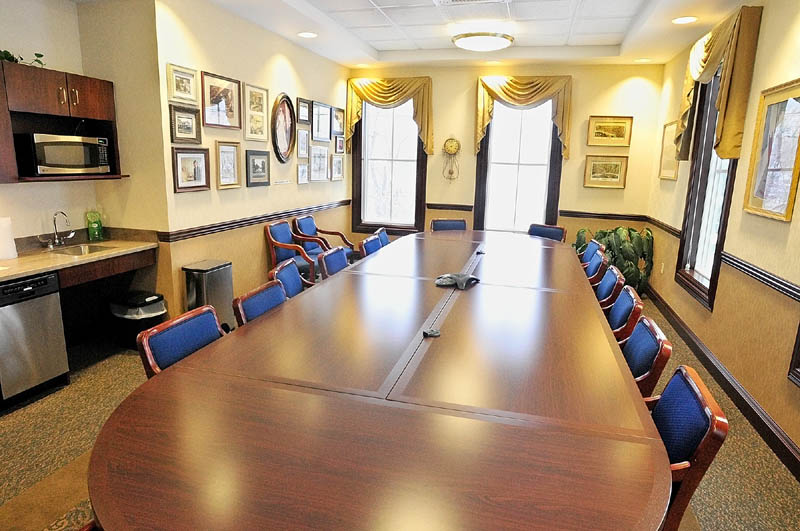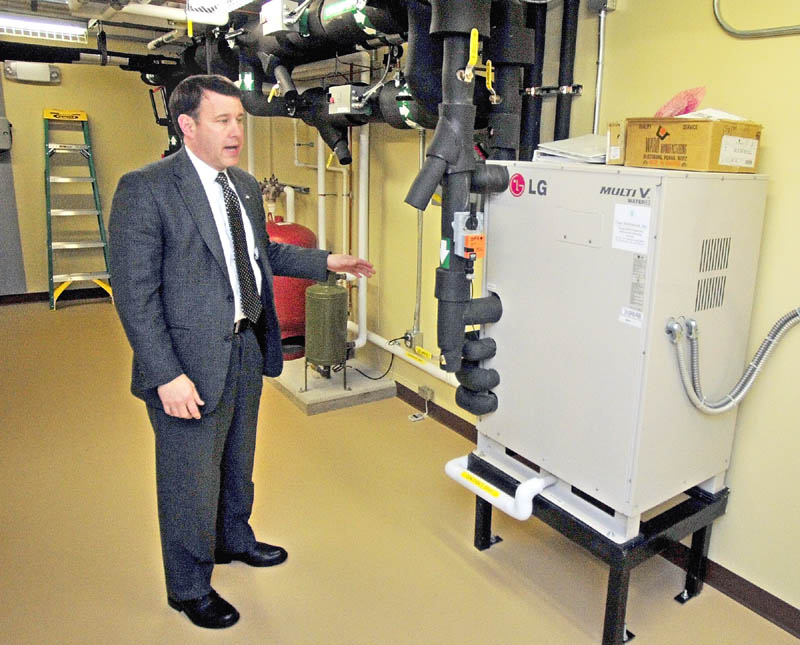FARMINGDALE — Where once a historic mansion perched above Maine Avenue, a modern bank building has sunk its roots deep into the ground.
Nearly every feature of Kennebec Savings Bank’s new branch, which opened at 1 Northern Ave. last week, is environmentally friendly, including the geothermal system that will use six 450-foot deep wells to heat and cool the building.
“Green” building practices had a lower profile when Kennebec Savings Bank built its last branch, in Waterville in 1995; but they were a top priority for the bank this time around.
“Any company today needs to try to blend their business with trying to be better to our environment,” said Andrew Silsby, the bank’s executive vice president and chief operating officer. “It’s very difficult for a bank; we produce a lot of statements to be truly green, but we can all strive to do a better job to save the environment.”
Everything from demolition of the mansion that stood on the site to sourcing of construction materials, from the highly insulated windows and walls to the carpets and cleaning materials, was intended to be low-impact. The project’s architects are seeking silver certification from LEED, a national rating system for green building.
The Farmingdale branch replaces the site Kennebec Savings rented on Bridge Street in Gardiner for three years.
Bank officials thought they might be able to convert part of the ship captain’s mansion on Maine Avenue, just as they had repurposed a historic home for their location in Augusta.
However, the mansion, built in the late 1820s, was structurally unsound and couldn’t be retrofitted in an environmentally friendly way.
The bank tore down the home and incorporated some of its features into the new building. The lobby is designed to look like a carriage house, topped by a cupola, like the original. Tall windows face Maine Avenue, and the hip roof features decorative, nonfunctioning chimneys.
Pictures and stories of the home, collected from two former residents who now live at Granite Hill Estates, are on display in the bank building’s community room.
Kennebec Savings Bank hired the Bangor architecture firm WBRC, which designed the Hannaford supermarket on Cony Street in Augusta. The Hannaford was the nation’s first LEED platinum-certified supermarket and used many of the same green building practices as the Farmingdale bank, including a geothermal system.
Kris Kowal, the WBRC project manager who led the Farmingdale project, said there’s increasing interest in geothermal systems. The largest one in Maine is at Hampden Academy, which opened in August. The school was designed by WBRC, and its 200,000 square feet are heated and cooled by a 156-well geothermal system.
The bank branch is about 3,500 square feet, and its bore field is made up of six wells.
Geothermal heating and cooling works because the temperature of the ground in Maine is always 45 to 49 degrees, Kowal said.
“We can rely on that throughout the year, and that’s how we’re able to generate heating and cooling, off of that consistent temperature,” Kowal said.
Thousands of feet of pipe form a closed loop connecting the bank building with the six wells. On a recent day, the exterior air temperature was 25 degrees, but a gauge in the building’s basement showed fluid in the loop — a mixture of water and glycol — entering the building at 49 degrees.
A heat exchanger transfers heat from the water loop to a separate refrigerant loop, which then heats the building.
Silsby said the building will use a little extra electricity to pump the water in the geothermal loop and run the air exchange system, but they’re reducing use of fossil fuels by avoiding oil or gas for heat.
Kowal said geothermal systems are becoming more cost-effective because more people are learning to design and install them. Also, other green building techniques are making geothermal systems themselves more effective by reducing the heating season to six months.
Because of highly insulated walls and windows, Kowal said, the building actually may need to be cooled by April. The building is so tight, in fact, that the photocopier has its own exhaust pipe, because otherwise airborne toxins would build up inside.
Silsby said he hopes features such as abundant daylight and low-emission carpets and glues also will make the branch a healthier and more pleasant place to work and do banking.
“It costs a little more, but the reality is it’s better for our employees and it’s better for the environment,” he said.
Susan McMillan — 621-5645
smcmillan@mainetoday.com
Send questions/comments to the editors.






Success. Please wait for the page to reload. If the page does not reload within 5 seconds, please refresh the page.
Enter your email and password to access comments.
Hi, to comment on stories you must . This profile is in addition to your subscription and website login.
Already have a commenting profile? .
Invalid username/password.
Please check your email to confirm and complete your registration.
Only subscribers are eligible to post comments. Please subscribe or login first for digital access. Here’s why.
Use the form below to reset your password. When you've submitted your account email, we will send an email with a reset code.